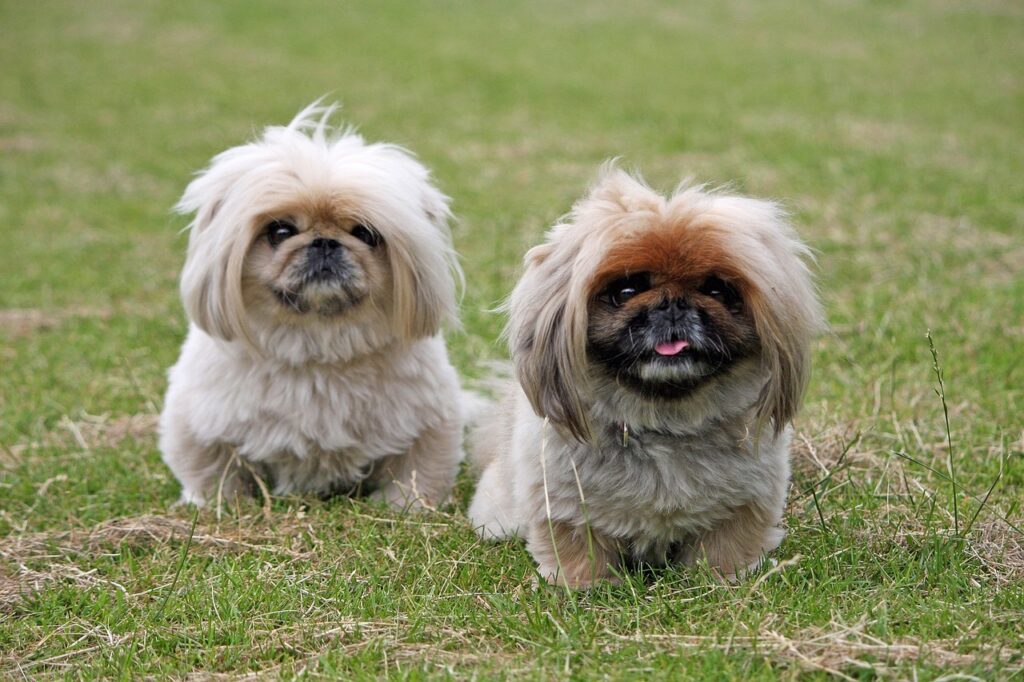
The Pekingese breed is known for having a distinct appearance similar to a lion, carrying themselves with an air of regality. Their compact size makes them well-suited for living in smaller spaces like condominiums. This is particularly relevant in the Philippines, where more and more people choose to live in condominiums.
In this post, we will explore the price range of a Pekingese puppy, recurring expenses, and factors that influence the cost. We’ll also discuss the pros and cons of owning this breed, offering a valuable perspective for your pet ownership decision.
How Much Does a Pekingese Cost in the Philippines?
Prices can vary significantly, but you can expect to pay anywhere from ₱20,000 to ₱40,000. The price tag may depend on several factors, such as the dog’s lineage, color, and size. Unique colors or rare variations could fetch a higher price.
While there aren’t specific breeds under the Pekingese, it’s worth noting that there are different types based on size, like the Teacup Pekingese, which is smaller and might come with a heftier price tag.
The Yearly Expenses
For those contemplating the inclusion of such a loyal and loving companion into their lives, it’s vital to comprehend the financial commitment involved. After all, welcoming a pet into your home extends beyond the initial price tag—it encompasses the ongoing expenses necessary to ensure your fluffy friend remains in the best of health and spirits.
1. Feeding Costs
Feeding your four-legged friend is costly. Premium dog food brands, recommended for this breed’s dietary needs, can set you back around ₱1,500 per month. This adds up to approximately ₱18,000 annually.
2. Veterinary Care
Typically, vet bills for a Pekingese will cost you ₱10,000 annually. This includes regular check-ups, vaccinations, and preventive treatments for everyday health issues like heartworms or fleas.
3. Grooming Needs
They are known for their long, luxurious coat. Regular grooming is essential to keep your pet looking its best and preventing skin issues. Expect to spend around ₱500 monthly on grooming services, totaling ₱6,000 per year.
4. Miscellaneous Expenses
Essential items like bowls, collars, and leashes will cost around ₱1,000. Additional expenses may include toys, bedding, and training supplies. These costs can vary, but let’s estimate an average of ₱750 per month, translating to ₱10,000 per year.
Total Yearly Expenses
Adding up these expenses, the annual cost of owning a Pekingese is approximately ₱44,000. This doesn’t include the initial cost of buying the puppy.
The First Year Expenses
| Expense | Cost |
| Pekingese’s Price | ₱20,000 to ₱40,000 |
| Food | ₱18,000 |
| Veterinary Care | ₱10,000 |
| Grooming | ₱6,000 |
| Miscellaneous Costs | ₱10,000 |
| TOTAL | ₱64,000 to ₱84,000 |
Becoming the owner of such a breed entails more than just the upfront cost. It’s an ongoing financial commitment that demands thoughtful deliberation. However, their invaluable companionship, unwavering loyalty, and pure joy transcend monetary value, making every peso invested a worthy expenditure.

Factors that Affect the Price
If you plan on welcoming this tiny lion-like breed into your home, it’s wise to understand the factors influencing its price.
a. Lineage and Pedigree
The lineage of a Pekingese puppy can significantly impact its cost. A well-documented pedigree, showcasing a line of champions or purebred dogs, can increase the price tag.
b. Geographical Location
Where you live or where the breeder is from can also affect the price. Prices may soar in regions with high demand, like in the province.
c. Breeder Reputation
The reputation of the breeder plays a crucial role as well. Renowned breeders prioritizing health checks and proper breeding practices often charge more for their puppies.
d. Quality of Bloodline
The price of a dog can also be influenced by the excellence of its lineage, which, while connected, is different from its pedigree. Dogs descending from exceptional lineages frequently yield pups suitable for exhibitions and, as a result, carry higher price tags.
e. Size Variation
Size variation within the breed also matters. For instance, smaller variants like the Teacup Pekingese might be priced higher due to their rarity and popularity.
f. Color and Rarity
Uncommon colors or rare variations can fetch a higher price tag. The rarer the coat color, the more desirable and expensive the pup can be.
Considering these elements, you’ll be better equipped to find a Pekingese puppy that fits your lifestyle and budget. After all, it’s a worthy investment that will bring joy and warmth to your home for years.
The Upsides and Downsides of Owning a Pekingese
One breed stands out for its unique blend of regal charm and steadfast loyalty. This particular canine companion is ideally suited to those who appreciate a dignified demeanor and an adorable fluffiness that can melt any heart. However, as with any commitment, there are advantages and disadvantages.
Here’s an exploration of the pros and cons of owning this breed in our country’s tropical climate.
Pros
- Adaptability: Despite originating from the cooler regions of China, these dogs have demonstrated a remarkable ability to adjust to different climates, including the warm weather. Their dense double coat protects them from the heat, making them suitable for the tropics.
- Size: Their compact size makes them ideal for apartment living. They don’t require a lot of space to move around, which is perfect for the often-cramped living spaces.
- Temperament: This breed is known for its independent yet affectionate nature. They form strong bonds with their human family members, providing a source of comfort and companionship that’s hard to match.
- Low Exercise Needs: Unlike more energetic breeds, these small dogs require minimal exercise. A short walk or a little playtime indoors is sufficient, which can be a plus for busy city dwellers.
Cons
- Grooming Needs: Their long, luxurious coat requires regular grooming to prevent matting and skin issues. This can be time-consuming and incur additional costs if professional grooming services are used.
- Heat Sensitivity: While they can adapt to warmer climates, extreme heat can be dangerous for these dogs. They must stay cool and hydrated, especially during the hottest months.
- Health Issues: This breed is prone to specific health problems, such as breathing difficulties and eye issues, which may incur additional veterinary costs.
- Stubbornness: They’re known for their independent streak, which can sometimes come across as stubbornness. Training them requires patience and consistency.
On the one hand, their adaptability, size, temperament, and low exercise needs make them an excellent fit for many households. On the other hand, potential owners must be prepared to tackle grooming needs, sensitivity to heat, health issues, and occasional stubbornness. But if you’re willing to handle these challenges, the rewards can be equally significant. This is a decision that requires careful thought and consideration.

Your Essential Checklist: Key Questions for Your Breeder
Acquiring a new furry companion is exciting, but ensuring your new friend comes from a reputable source is crucial. Here’s a guide to help you ask the right questions before committing to your potential pet.
- Can I see the puppy with its mother? Observing the puppy with its mother provides insights into its future temperament and health. It also verifies the breeder’s legitimacy. A good breeder will never separate a puppy from its mother too early.
- Do you have a pedigree certificate? The pedigree certificate indicates the puppy’s lineage and ensures it’s a purebred. The certificate should come from organizations like the Philippine Canine Club Inc. (PCCI).
- Have the puppies been health checked? This breed is prone to specific health issues such as eye problems and breathing difficulties. Ask if the puppies have been screened for these conditions.
- What socialization experiences have the puppies had? Early socialization is vital for this breed. They can be independent and aloof with strangers, so they need exposure to various people, sights, sounds, and experiences when young.
- How big are the parents? This breed is small, typically at 14 pounds in weight. If the parents are significantly larger, it could indicate that the puppies are not purebred.
- What are the parents’ temperaments like? A puppy inherits traits from its parents. Knowing their temperaments can give you an idea of what your puppy might be like growing up.
- Can I return the puppy if there are any issues? Reputable breeders will always take a puppy back if it develops a health issue or you cannot care for it.
Investigating authenticity is an essential part of this process. Your breeder should be open to answering all your questions and providing the necessary documentation. They should be registered with recognized organizations like PCCI, ensuring their commitment to maintaining breed standards.
In conclusion, do your homework before bringing a new pet into your home. A good breeder will appreciate your thoroughness and be as invested in ensuring their puppies go to loving, responsible homes. With this guide, you’re on your way to finding a lifelong loyal companion.






